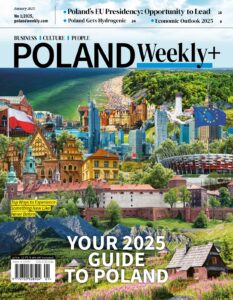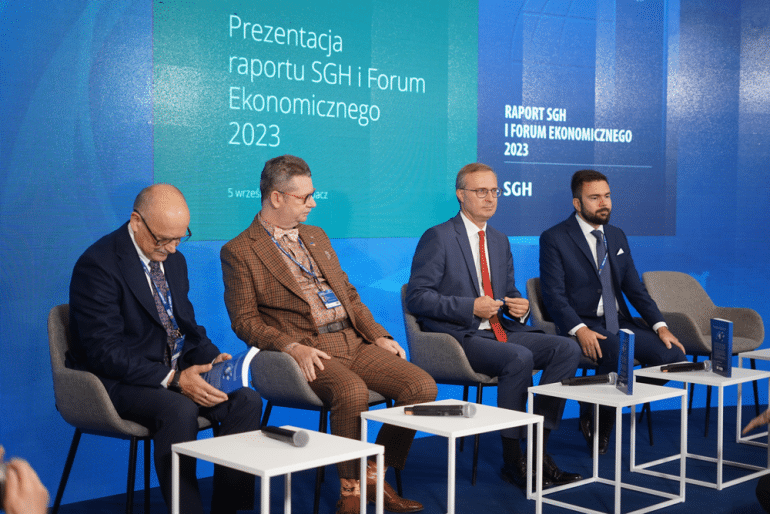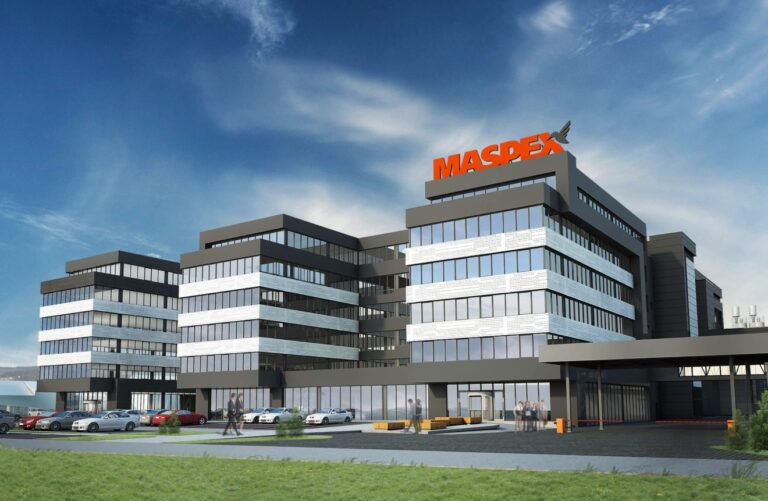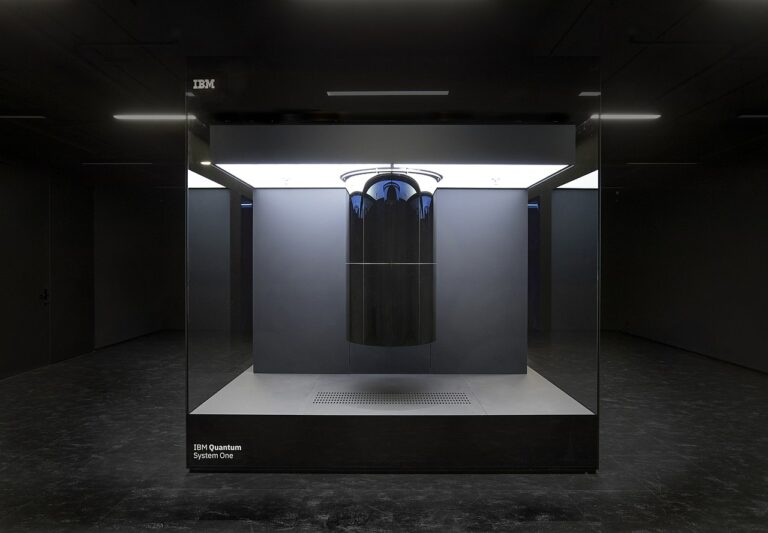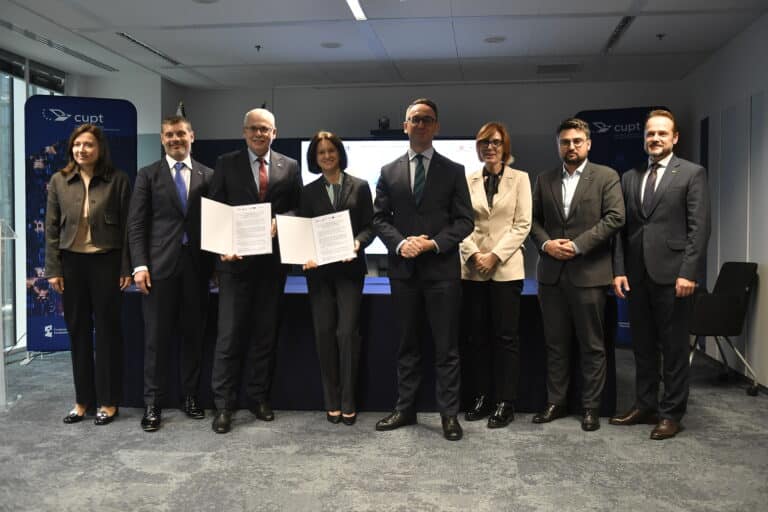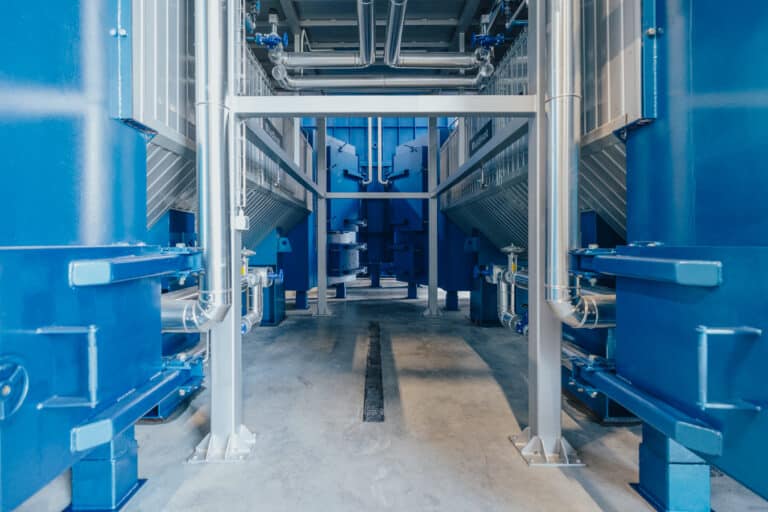Patchwork capitalism in CEE
Below are some of the highlights from the SGH and Economic Forum Report, a cyclical publication that since 2018 has summarized the most important economic and social processes taking place in Poland and in the countries of the Central and Eastern European (CEE) region.
Development trajectories of CEE countries – the impact of the COVID-19 pandemic and the war in Ukraine
Despite a recession in 2020 and a slowdown in growth in 2022, 11 CEE countries (Bulgaria, Croatia, Czech Republic, Estonia, Hungary, Latvia, Lithuania, Poland, Romania, Slovakia, Slovenia) achieved faster growth rates than the EU average over the period.
Assuming that the 11 CEE countries represent a new and distinct model of patchwork capitalism in the EU, the latter had the highest rate of economic growth compared to the four other models of capitalism in the European Union: continental (Austria, Belgium, France, the Netherlands, Luxembourg and Germany), Mediterranean (Greece, Spain, Portugal and Italy), Nordic (Denmark, Finland and Sweden) and Anglo-Saxon (Ireland and the UK, which was definitively out of the EU on 1 January 2021).
Despite their ability to achieve the highest relative rate of GDP growth over the long term, countries representing the patchwork model of capitalism fare much worse in coping with short- and medium-term negative external shocks, as evidenced, for example, by the 2009-2014 data covering the aftermath of the global financial crisis.
A spectacular deviation from this general pattern was Poland, which not only did not suffer a recession in 2009, but also achieved the highest (2.9%) average GDP growth rate in the EU, apart from Malta, during these years.
Among the CEE-11 countries, Poland achieved the fastest economic growth over the entire analyzed period from 2004 to 2022. Similar results in this respect were still only achieved by Romania and Slovakia. In the EU as a whole, only Ireland and Malta recorded higher growth rates than Poland.
In 2020, the previous favorable trends in the area of economic growth in the CEE-11 were reversed. All countries in this group, due to the COVID-19 pandemic and the sharp reduction in the scale of economic activity, mainly as a result of administrative restrictions (lockdowns) and a collapse in aggregate demand, fell into recession. However, the scale of the GDP decline varied, with the largest in Croatia (due to the crucial importance of the tourism sector) and the smallest in Lithuania, Estonia and Poland.
2021, on the other hand, was marked by a rapid recovery. The following year, 2022, saw a continuation of favorable trends (positive growth rates were maintained by all the CEE-11 except Estonia), but growth dynamics slowed considerably as a result of Russia’s invasion of Ukraine and a fairly rapid tightening of monetary policy in response to rising inflation rates in all countries of the region, which is also partly a consequence of the conflict.
Central and Eastern European economies in a high inflation environment
In 2022, inflation in the CEE-11 was more than twice as high as in the so-called ‘old EU’ countries. The rise in inflation prompted central banks to tighten monetary policy, which in turn led to a significant increase in interest rates. High inflation combined with higher interest rates seriously affected the economic situation of households and influenced their economic behavior.
In the mid-2022 quarterly Household Condition Survey, the Institute for Economic Development (IRG) of the Warsaw School of Economics (SGH) asked 1,000 Poles what had the greatest impact on their overall assessment of their quality of life. The most common answer given by those surveyed was ‘inflation increase’ (78.2% of respondents), followed by ‘war in Ukraine’ (55.4%), ‘(domestic) political conflict’ (25.8%), ‘income decrease’ (24.2%), ‘personal issues’ (21.2%), ‘income increase’ (15%) and ‘lifting of covid sanitary restrictions’ (11.2%).
In Poland, consumption has been declining since Q3 2022. In the other countries of the region (except Latvia), private consumption has been growing steadily since the COVID-19 crisis ended.
Unleashing the power of investment – Poland’s potential compared to its peers from Central and Eastern Europe
Poland has been facing a decline in investments for years. Their value relative to GDP during the period 2008–2022 decreased from 23.1% in 2008 to 16.8% in 2022. Furthermore, in terms of investment volume, Poland lags significantly behind other CEE countries, particularly Czechia and even Hungary, and this trend is of a long-term nature. These persistent trends are highly negative when viewed in the context of development challenges facing Poland, which, like most CEE countries, has already achieved an average level of development and may soon fall into the middle-income trap. The model of a dependent economy, based on foreign investments, is also gradually losing its capacity to generate growth in the Polish economy. In this situation, a key challenge is to strengthen investments by Polish companies and promote investments based on advanced technologies and human capital.
An analysis of investment data in Poland and other CEE countries from 2005 to 2021 makes it possible to identify three sub-periods characterized by different trends. The first period covers the time from 2005 until the global crisis of 2007–2009, culminating in 2009. During this period, investments in Poland and CEE countries grew and reached their highest value relative to GDP. In Poland, it was 23.1% of GDP in 2008. However, other CEE countries achieved significantly better results during this time, with a maximum rate of 29.7% of GDP. The end of the global crisis brought stabilization in investment in the analyzed economies, but at a noticeably lower level. As a result, during the next sub-period (2010–2015), the value of investments in CEE countries fluctuated within the range of 22.7% to 23.6% of GDP, while in Poland, it stabilized at 19.0% to 20.5% of GDP. A characteristic feature of this period, alongside the relatively stable investment level in GDP, was the relatively small difference between Poland’s results and the average for other CEE countries. However, the last sub-period (2016–2021) deepened these disparities to the disadvantage of Poland. During this time, CEE countries experienced a slight increase in investment rate, from 21.7% to 23.5% of GDP, while in Poland, the investment rate did not exceed 19% of GDP, reaching a minimum of 17% of GDP in 2021. It is worth noting that according to preliminary data from the Polish Central Statistical Office (GUS), the investment rate in the Polish economy decreased to 16.8% of GDP in 2022.
Considering the long-term downward trend characterizing investments in Poland, a probable scenario for the years 2023–2025 is continuation of the decline in investments to
16.4% of GDP in 2025. This scenario may be supported by the pressure caused by various factors, including high inflation and interest rates, a slowdown in GDP growth, uncertainty about a quick resolution to the armed conflict in Ukraine, lack of transmission of lower energy commodity prices into retail prices and the absence of factors stimulating private investments.
Presentation of the Report of the SGH Warsaw School of Economics and the Economic Forum took place on September 5 in Karpacz.
